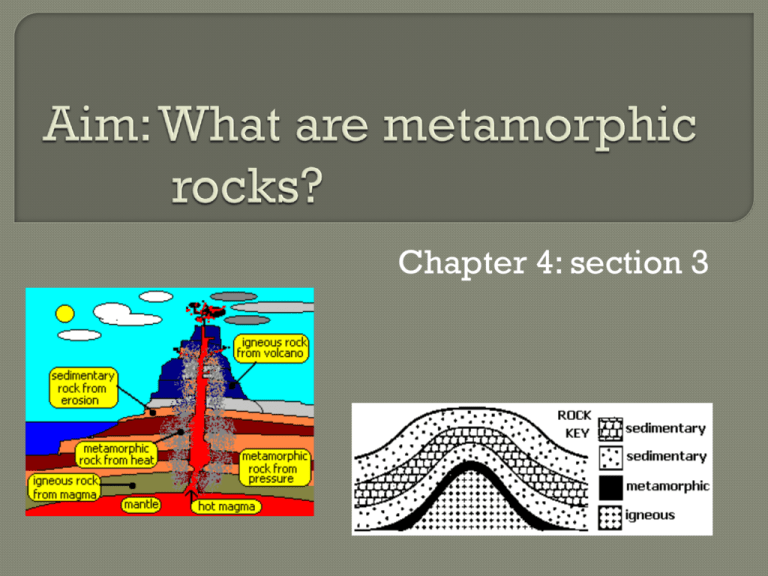Aim: What are metamorphic rocks?
advertisement

Chapter 4: section 3 Metamorphic rocks are rocks that have been changed because of changes in temperature and pressure or due to the presence of hot watery fluids. Metamorphic rocks may form from igneous, sedimentary rock, or other metamorphic rocks. Example: granite gneiss Rocks beneath the Earth’s surface are under great pressure from the rocks above them. Temperature will increase with depth in the Earth. Underneath the Earth some minerals will melt or dissolve and recrystalize. Example: Shale Slate phyllite schist gneiss Each different type of metamorphic rock can come from multiple parent rocks. Fluids can move through rock and change the rocks composition. Example: What Water and carbon dioxide are fluids? Texture and mineral composition determine how a metamorphic rock is classified. • Foliated – layers • Nonfoliated – no layers Physical properties of metamorphic rocks, such as the watertight nature of slate, make them useful for many purposes. Foliated Rocks • When mineral grains line up in parallel layers, the metamorphic rock is said to have foliated texture. Ex. Slate and gneiss • Shale slate • Shale: (minerals arrange into layers with heat and pressure.) • Slate: Slate is watertight and easily split into layers • Uses: patio and pools Nonfoliated rocks describe metamorphic rock, such as quartzite or marble, whose mineral grains grow and grow but do not generally form layers. Grains of quartz sandstone quartzite








